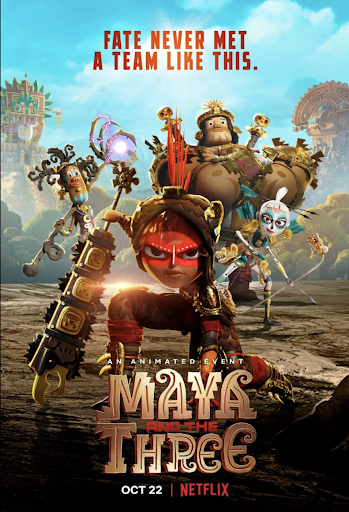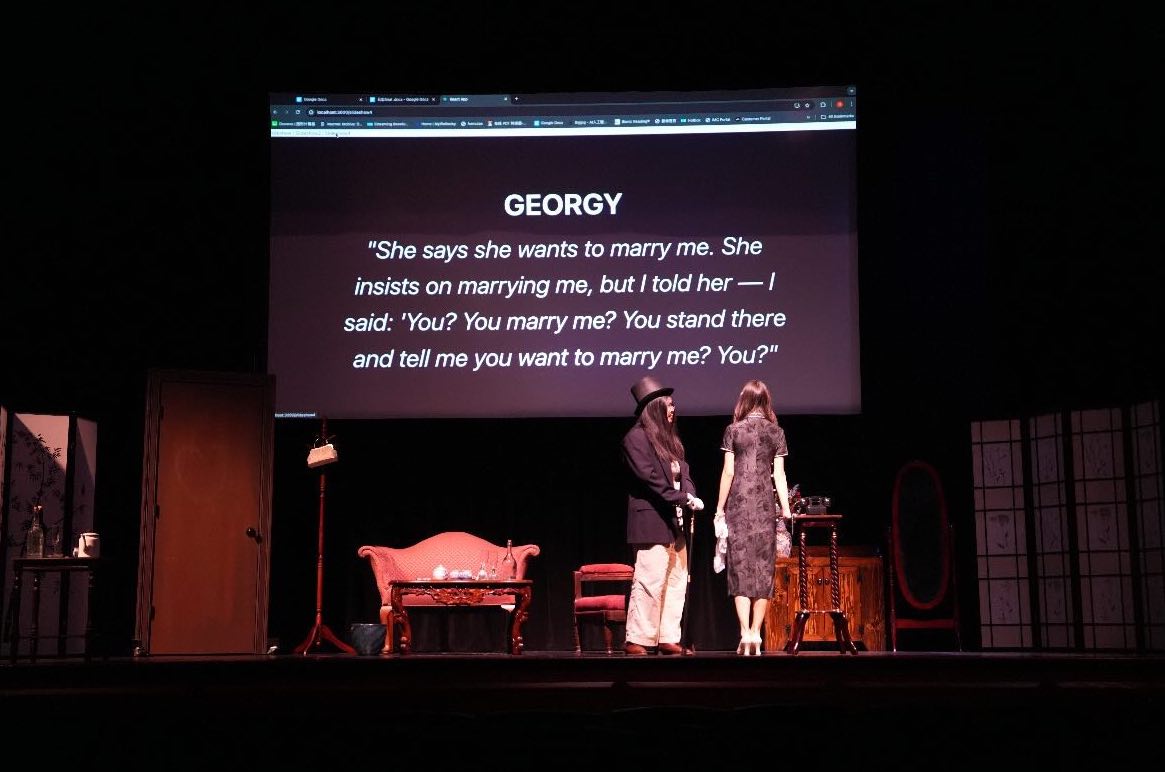“Maya and the Three” is an animated miniseries set in a world based on pre-colonial Mesoamerica and other Indigenous cultures. It follows a 15 year old warrior princess, Maya, who sets out alone to fulfil a prophecy to defeat the gods and save both her kingdom and the world. Other than its beautiful animation and empowering storyline, a wonderful thing about this miniseries is how it represents people of color as flawed but ultimately good. This sort of representation is unusual — we normally see people of color as flat, one-dimensional characters who are either completely good or bad.
Every character in this show has a tragic backstory that defines who they are as a person, all of which boil down to them being alone because they were different from the pack. Rico the Rooster Wizard was ostracized for using a different kind of magic that his kingdom was unfamiliar with. Chimi the Skull Archer was called “el Monstruo Blanco” and sent away to the forest to be raised by animals due to her appearance. Picchu the Puma Warrior is all alone in the world because his family was killed by someone he showed mercy towards. They all manage to open up and find themselves belonging over the course of the show. Despite their upbringing, they all succeed in being part of a community — a sweet message to show children.
However, there is some violence, including the beginning where Maya’s three brothers are killed. It also ends with Picchu and Zatz, two secondary main characters, dying in the war. These deaths are not violent and there are no extreme reactions to them by Maya, and I almost wish they were addressed a little more. Another thing that could have been delved into more is Maya’s father, the king of Teca cheating on his wife, the queen, with Maya’s birth mother, the Goddess of Death. There is no rage, simply acceptance on the part of the Queen which comes across to me as unrealistic. There is also a moment where the king manages to look slightly sheepish, while at the same time awkwardly giggling almost flirtatiously in front of his wife when the Goddess of Death shows up towards the end of the series. The queen and the Goddess of Death even manage to get along, and the only person who is shocked by this is Maya. However, this is a show for children after all, and perhaps the nuances of a divorce and custody battle would add unnecessary complications and detract from the main storyline.
The animation is fantastic, detailed and rich. The multiple locations that the characters go through allow the audience to see many unique cultural settings. Each location is based on different cultures: Teca, Luna Island, the Jungle Lands and the Golden Mountains are based on Aztec, Caribbean, Mayan and Incan civilizations, respectively. There are also many easter eggs in the miniseries, with characters from Jorge Gutiérrez’s past works making small cameos in many scenes. If you have seen “El Tigre,” you may have noticed his famous line “This I swear” recurring in “Maya and the Three.” And if you paid close attention, maybe you saw El Tigre himself standing next to the Divine Gate in the opening prologue. Another similarity that can be drawn is to “The Wizard of Oz,” and Gutiérrez himself told Befores & Afters that Maya is Dorothy, Rico is The Scarecrow, Chimi is The Tin Man and Picchu is The Lion. That is not the only allusion in the show — in fact, The Los Angeles Times notes “joking references to ‘Raiders of the Lost Ark,’ ‘Jaws,’ ‘Lord of the Rings,’ Mr. T. and even the Smiths (‘To die by your side would be such a heavenly way to die’),” says Rico to Chimi, stealing a line from “1985” as well as a Spanglish Batman joke.
“Maya and the Three” is worth a watch solely for its culturally rich animated settings, but is a must-watch because of how it empowers nearly every character in the show with a transformational arc that shows us the best in them. Gutiérrez has created a world that anyone would want to live in, characters that are multidimensional and has explored complicated topics like death and loss in a way that is easy for children to grasp. The Los Angeles Times says it best: “There is something, not, naive, exactly, about ‘Maya and the Three,’ but a willingness to be off a little — to dare to be a little dumb on the one hand and heavy on the other.”







